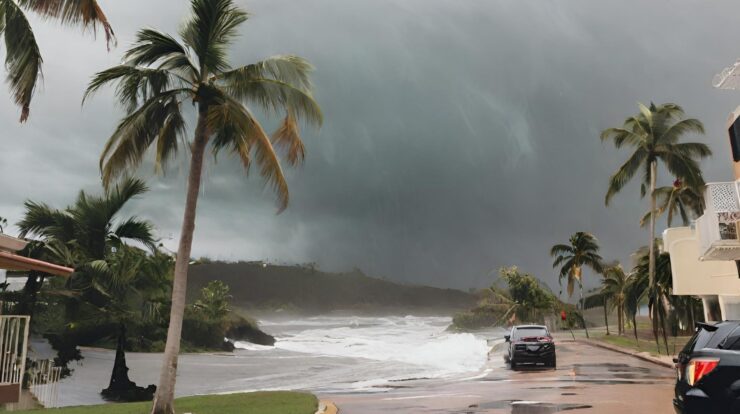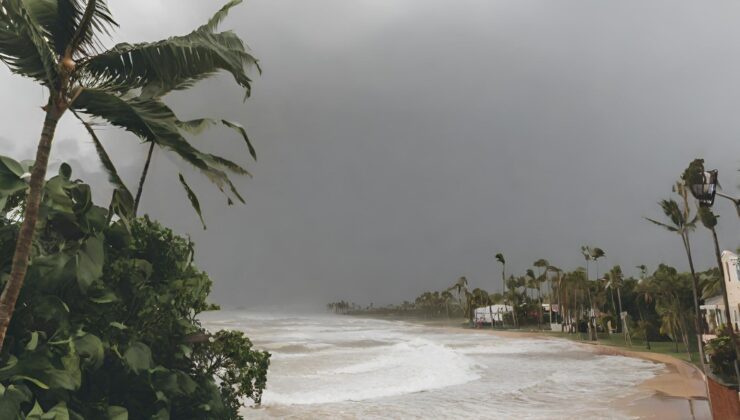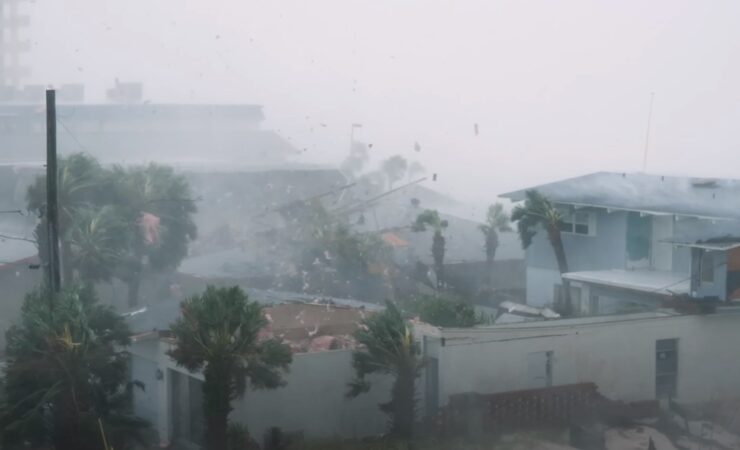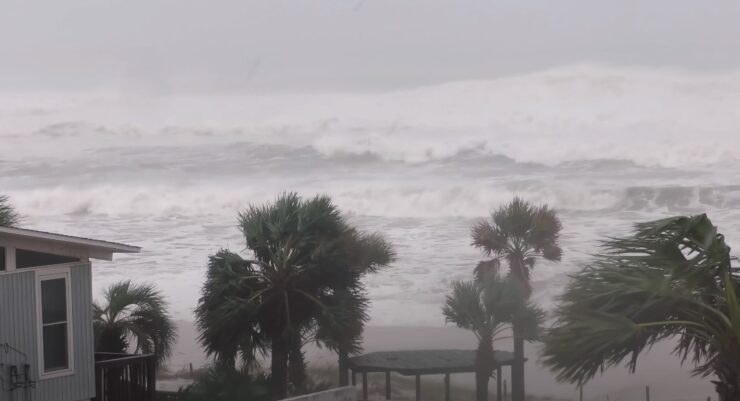Puerto Rico, a beautiful and vibrant island in the Caribbean, faces a recurring natural phenomenon each year: hurricane season. This period, marked by powerful storms, significantly impacts the island’s life.
Knowing the dynamics of hurricane season in Puerto Rico is crucial for residents and visitors alike.
In this blog post, I will explain the timeline of the hurricane season, its historical context, preparation strategies, and the resilience of Puerto Rico in facing these natural challenges.
Historical Context and Timeline

The term “hurricane” originates from the language of the Taino Indians, the indigenous people of Puerto Rico.
This word has become a global term to describe the massive storms characteristic of tropical regions.
Having knowledge about the historical context of hurricanes in Puerto Rico is not just about weather patterns but also a journey into the island’s cultural heritage.
Timeline and Characteristics
Hurricane season in Puerto Rico spans from June to November, with its peak typically in August and September.
These storms form over warm tropical waters and are categorized as hurricanes when they reach sustained winds of at least 74 miles per hour.
This period is a critical time for the island, as hurricanes can bring devastating winds and heavy rainfall.
Recent Hurricanes: Fiona and Maria
In recent years, Puerto Rico has experienced significant hurricanes, including Fiona in 2022 and the devastating Maria in 2017.
These events have left lasting impacts on the island, highlighting the importance of knowing and preparing for the season.
Preparation
An interesting aspect of Puerto Rico’s infrastructure is its power grid, designed with a self-protection mechanism that shuts down during hurricanes to prevent further damage.
This often results in island-wide blackouts, a precautionary measure to safeguard the electrical system.
Stocking Up Essentials

During the hurricane season, Puerto Ricans traditionally stock up on essentials such as canned food, soda crackers, sausages, and hot chocolate mix.
This practice ensures that households have enough supplies to last through potential disruptions.
Safety Measures and Regulations
It’s crucial to stay indoors during a hurricane and avoid risky areas like rivers and the ocean.
Puerto Rico also enforces a ban on alcohol sales once a hurricane makes landfall, aiming to ensure public safety.
Additionally, ATMs may not function during power outages, making it advisable to have cash on hand.
Resilience and Adaptation

NOAA’s Role in Safety
The National Oceanic and Atmospheric Administration (NOAA) plays a vital role in monitoring and forecasting hurricanes, contributing significantly to the safety of Puerto Rico during this season.
Their advanced warning systems and accurate predictions allow residents to prepare and take necessary precautions.
The Role of Puerto Rico’s Emergency Management Office
Puerto Rico’s Emergency Management Office operates around the clock during hurricanes, providing critical assistance and ensuring that the island’s response is swift and effective.
This organization is a testament to Puerto Rico’s resilience and preparedness in the face of natural disasters.
Cultural Resilience
The concept of resilience is deeply ingrained in Puerto Rican culture, as evidenced by the Taino word encoded in the island’s DNA: “resilience.”
This characteristic has been demonstrated time and again as Puerto Ricans face and overcome the challenges posed by hurricanes.
Traveling During This Season

Low Season Opportunities
While hurricane season might seem a daunting time to visit Puerto Rico, it is actually considered the low season for tourism.
This period offers great deals on accommodations, making it an attractive option for budget-conscious travelers.
Rainfall Patterns
August is not only the peak of hurricane season but also the rainiest month in Puerto Rico, averaging about 7 inches of rain.
Travelers should be prepared for wet conditions and plan accordingly, keeping in mind the potential for hurricanes.
The Science Behind Hurricanes

Formation and Development
Having knowledge about the science behind hurricane formation and development is key to comprehending their impact.
Hurricanes form over warm ocean waters and are fueled by moisture from the sea surface.
As they move across the ocean, they gather strength, potentially becoming large and destructive storms by the time they reach land.
Monitoring and Forecasting
Advancements in meteorology have significantly improved hurricane monitoring and forecasting.
Satellite imagery, radar technology, and computer modeling contribute to accurate predictions, allowing for timely warnings and preparations.
This scientific prowess is vital for mitigating the impact of hurricanes on Puerto Rico.
The Global Climate Perspective
The increasing intensity and frequency of hurricanes are often discussed in the context of global climate change.
Knowing the link between climate patterns and hurricane activity is essential for developing long-term strategies to cope with these natural disasters.
Community and Government Response

Emergency Services and Infrastructure
The role of emergency services and the robustness of infrastructure are critical in hurricane response.
Puerto Rico has developed systems and protocols to ensure that emergency services are available and effective during hurricanes.
The government’s ability to provide aid and restore infrastructure post-hurricane is crucial for the island’s recovery.
International Aid and Collaboration
In times of severe hurricanes, international aid and collaboration become vital. Partnerships with foreign governments, NGOs, and international organizations enhance Puerto Rico’s capacity to respond to and recover from these natural disasters.
These collaborations also bring in much-needed resources and expertise.
Long-term Recovery and Building Resilience
Post-hurricane recovery is not just about immediate relief; it’s also about building long-term resilience.
This includes strengthening infrastructure, revising building codes, and improving emergency response systems. Such measures ensure that Puerto Rico is better prepared for future hurricanes.
FAQs
Can tourists still enjoy their vacation in Puerto Rico during hurricane season?
Yes, tourists can enjoy their vacation during this season, but it’s important to stay informed about weather forecasts and be prepared for sudden changes in weather conditions.
If you reserve a room in a beautiful hotel such as Yunque Mar, don’t worry, you will still be able to enjoy your vacation.
How does Puerto Rico’s wildlife fare during hurricanes?
Puerto Rico’s wildlife has adapted over time. However, severe storms can still impact habitats and wildlife populations, sometimes causing temporary disruptions in the ecosystem.
Are there any special architectural designs in Puerto Rico to withstand hurricanes?
Yes, many buildings in Puerto Rico are designed with hurricanes in mind, featuring reinforced structures, resistant windows, and elevated foundations to minimize flood damage.
How do schools in Puerto Rico prepare for hurricane season?
Schools in Puerto Rico often have preparedness plans, which include emergency drills, securing the infrastructure, and sometimes closing during high-risk periods to ensure the safety of students and staff.
What role do local media play during the hurricane season in Puerto Rico?
Local media in Puerto Rico plays a crucial role in disseminating timely and accurate information about approaching storms, safety measures, and emergency resources, helping to keep the public informed and safe.
How do hurricane seasons affect Puerto Rico’s agriculture?
These seasons can significantly impact agriculture, with potential damage to crops and livestock. Farmers often take preventive measures, but recovery from severe storms can be challenging and time-consuming.
Summary
Hurricane season in Puerto Rico is a time of heightened awareness and preparation. From understanding the historical roots of the word “hurricane” to adopting practical strategies for coping with these powerful storms, Puerto Ricans exhibit remarkable resilience.
This resilience is a response to natural disasters and a fundamental part of the island’s identity and culture.
As visitors and residents alike navigate the challenges of hurricane season, they contribute to the ongoing story of Puerto Rico’s strength and adaptability.

